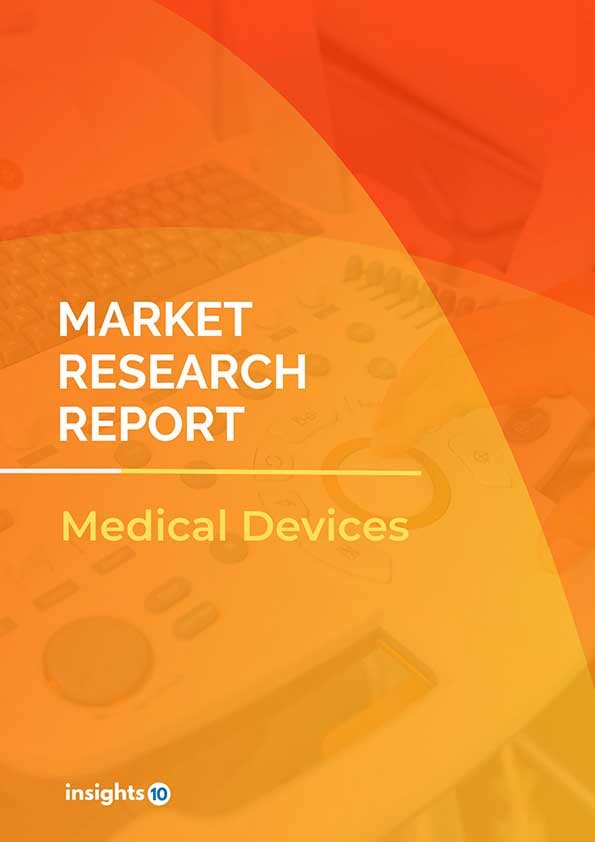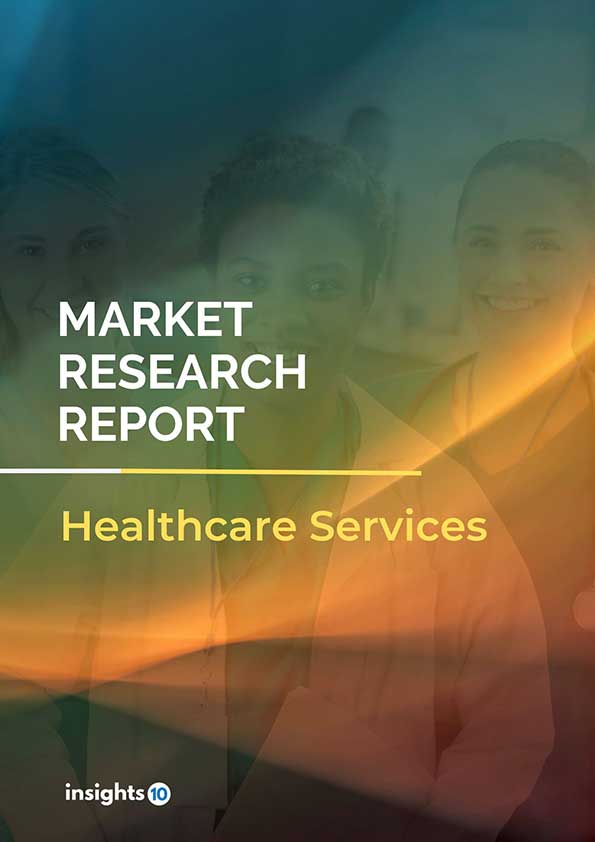Egypt CT Scan Market Analysis
Egypt CT Scan Market was valued at $12.91 Mn in 2023 and is predicted to grow at a CAGR of 9.37% from 2023 to 2030, to $24.16 Mn by 2030. The key drivers of this industry include the rising burden of chronic diseases, increasing healthcare expenditure, an aging population, and technological advancements. The industry is primarily dominated by GE HealthCare, Siemens Healthineers, Canon Medical Systems, and NeuroLogica Corp. among others.
Buy Now

Egypt CT Scan Market Executive Summary
Egypt CT Scan Market was valued at $12.91 Mn in 2023 and is predicted to grow at a CAGR of 9.37% from 2023 to 2030, to $24.16 Mn by 2030.
A CT scan, or computed tomography scan, is a sophisticated imaging procedure that uses X-rays to produce detailed cross-sectional images of the body. Unlike traditional X-rays, CT scans capture multiple views from various angles, which a computer then processes into a three-dimensional representation of internal structures such as organs, bones, and soft tissues. Before the scan, patients may prepare by wearing a gown and removing metal objects. Depending on the type of scan, they might need to ingest a contrast material to enhance the visibility of specific tissues. During the scan, patients lie on a table that moves through a donut-shaped scanner while X-ray images are taken. Afterward, a radiologist interprets the images to diagnose conditions like cancer, heart disease, bone fractures, internal bleeding, and injuries. While CT scans offer detailed diagnostic capabilities, they involve radiation exposure and can be costly, though advancements have minimized risks and enhanced safety. Other imaging options like X-rays, ultrasound, and MRI scans are considered based on specific medical needs and radiation concerns.
In Egypt, it is reported that 13.78% of cancer patients undergoing routine PET/CT scans showed incidental radiological signs of COVID-19, emphasizing CT imaging's value in detecting asymptomatic cases in vulnerable populations.
The market is therefore driven by significant factors like the rising burden of chronic diseases, growing population, and technological advancements. However, the high cost of CT scanners, the skilled workforce shortage, and reimbursement challenges restrict the growth and potential of the market.
A prominent player in this field is GE Healthcare, which launched a new refurbishing unit in Bangladesh for A1-Sure Ultrasound Systems, aiming to enhance accessibility to affordable ultrasound technology in developing regions, and Siemens Healthineers partnered with Microsoft to utilize Azure cloud services for AI-powered medical imaging solutions, aimed at advancing healthcare delivery with secure and scalable cloud computing. Other contributors include Canon Medical Systems, and NeuroLogica Corp. among others.

Market Dynamics
Market Growth Drivers
Rising Burden of Chronic Diseases: Egypt faces a significant burden of chronic diseases. According to the International Diabetes Federation, over 16.8% of Egyptians aged 20-79 have diabetes (IDF Diabetes Atlas, 2023). CT scans are crucial for diagnosing and managing such diseases, propelling the market growth.
Growing Population: Egypt's population is projected to reach 110 Mn by 2030 according to World Bank, 2023. This population growth translates to a potential increase in demand for CT scans for diagnosis and treatment across various age groups.
Technological Advancements: Advancements in CT scan technology are making them more appealing. For instance, the introduction of low-dose CT scans can minimize radiation exposure, potentially attracting more patients and driving market growth.
Market Restraints
High Costs: CT scanners are expensive, with acquisition costs ranging from $125,000 - $500,000. This can limit affordability for smaller hospitals and clinics, hindering wider market penetration.
Skilled Workforce Shortage: Operating and interpreting CT scans requires specialized training. A lack of qualified radiologists and technicians, particularly outside major cities, can hinder the efficient utilization of CT scanners.
Reimbursement Challenges: The Egyptian public health insurance system covers some CT scan costs, but out-of-pocket expenses can be a burden for patients. Limited private insurance penetration further restricts access to CT scans for some who need them.
Regulatory Landscape and Reimbursement Scenario
The Egyptian Drug Authority (EDA) regulates the CT scan market in Egypt. Manufacturers must secure approval from the EDA for their CT scanners before they can be imported, distributed, or used within the country. This process focuses on ensuring the safety, efficacy, and quality of CT scanners entering the market. While this helps maintain a baseline standard, it can be a time-consuming process that might delay access to the latest technologies.
Reimbursement for CT scans in Egypt presents a complex scenario. The Egyptian public health insurance system covers a portion of the costs for medically necessary CT scans. However, the specific coverage details depend on factors like the type of scan, the diagnosed medical condition, and the specific patient insurance plan. This can lead to significant out-of-pocket expenses for patients, potentially creating a financial barrier to CT scans. Private health insurance penetration is also limited, further restricting access for some. The Egyptian government is working on healthcare reforms to improve access to diagnostics like CT scans, but navigating the current reimbursement landscape can be challenging for both patients and healthcare providers.
Competitive Landscape
Key Players
Here are some of the major key players in the Egypt CT Scan Market:
- GE HealthCare
- Koninklijke Philips N.V.
- Siemens Healthineers AG
- Canon Medical Systems
- Alborg Laboratories & Radiology Services
- Alfa Labs
- Cairo Scan Radiology & Labs
- Egypt Radiology Group
- Ebtisama Radiology
- MedMark Teleradiology
1. Executive Summary
1.1 Device Overview
1.2 Global Scenario
1.3 Country Overview
1.4 Healthcare Scenario in Country
1.5 Regulatory Landscape for Medical Device
1.6 Health Insurance Coverage in Country
1.7 Type of Medical Device
1.8 Recent Developments in the Country
2. Market Size and Forecasting
2.1 Market Size (With Excel and Methodology)
2.2 Market Segmentation (Check all Segments in Segmentation Section)
3. Market Dynamics
3.1 Market Drivers
3.2 Market Restraints
4. Competitive Landscape
4.1 Major Market Share
4.2 Key Company Profile (Check all Companies in the Summary Section)
4.2.1 Company
4.2.1.1 Overview
4.2.1.2 Product Applications and Services
4.2.1.3 Recent Developments
4.2.1.4 Partnerships Ecosystem
4.2.1.5 Financials (Based on Availability)
5. Reimbursement Scenario
5.1 Reimbursement Regulation
5.2 Reimbursement Process for Diagnosis
5.3 Reimbursement Process for Treatment
6. Methodology and Scope
Egypt CT Scan Market Segmentation
By Technology
- High-end Slice CT
- Mid-end Slice CT
- Low-end Slice CT
- Cone Beam CT (CBCT)
By Application
- Oncology
- Cardiology
- Vascular
- Neurology
- Musculoskeletal
- Others
By Modality
- O-Arms
- C- Arms
By End-User
- Hospitals
- Diagnostic Imaging Centers
- Others
Methodology for Database Creation
Our database offers a comprehensive list of healthcare centers, meticulously curated to provide detailed information on a wide range of specialties and services. It includes top-tier hospitals, clinics, and diagnostic facilities across 30 countries and 24 specialties, ensuring users can find the healthcare services they need.
Additionally, we provide a comprehensive list of Key Opinion Leaders (KOLs) based on your requirements. Our curated list captures various crucial aspects of the KOLs, offering more than just general information. Whether you're looking to boost brand awareness, drive engagement, or launch a new product, our extensive list of KOLs ensures you have the right experts by your side. Covering 30 countries and 36 specialties, our database guarantees access to the best KOLs in the healthcare industry, supporting strategic decisions and enhancing your initiatives.
How Do We Get It?
Our database is created and maintained through a combination of secondary and primary research methodologies.
1. Secondary Research
With many years of experience in the healthcare field, we have our own rich proprietary data from various past projects. This historical data serves as the foundation for our database. Our continuous process of gathering data involves:
- Analyzing historical proprietary data collected from multiple projects.
- Regularly updating our existing data sets with new findings and trends.
- Ensuring data consistency and accuracy through rigorous validation processes.
With extensive experience in the field, we have developed a proprietary GenAI-based technology that is uniquely tailored to our organization. This advanced technology enables us to scan a wide array of relevant information sources across the internet. Our data-gathering process includes:
- Searching through academic conferences, published research, citations, and social media platforms
- Collecting and compiling diverse data to build a comprehensive and detailed database
- Continuously updating our database with new information to ensure its relevance and accuracy
2. Primary Research
To complement and validate our secondary data, we engage in primary research through local tie-ups and partnerships. This process involves:
- Collaborating with local healthcare providers, hospitals, and clinics to gather real-time data.
- Conducting surveys, interviews, and field studies to collect fresh data directly from the source.
- Continuously refreshing our database to ensure that the information remains current and reliable.
- Validating secondary data through cross-referencing with primary data to ensure accuracy and relevance.
Combining Secondary and Primary Research
By integrating both secondary and primary research methodologies, we ensure that our database is comprehensive, accurate, and up-to-date. The combined process involves:
- Merging historical data from secondary research with real-time data from primary research.
- Conducting thorough data validation and cleansing to remove inconsistencies and errors.
- Organizing data into a structured format that is easily accessible and usable for various applications.
- Continuously monitoring and updating the database to reflect the latest developments and trends in the healthcare field.
Through this meticulous process, we create a final database tailored to each region and domain within the healthcare industry. This approach ensures that our clients receive reliable and relevant data, empowering them to make informed decisions and drive innovation in their respective fields.
To request a free sample copy of this report, please complete the form below.
We value your inquiry and offer free customization with every report to fulfil your exact research needs.









































